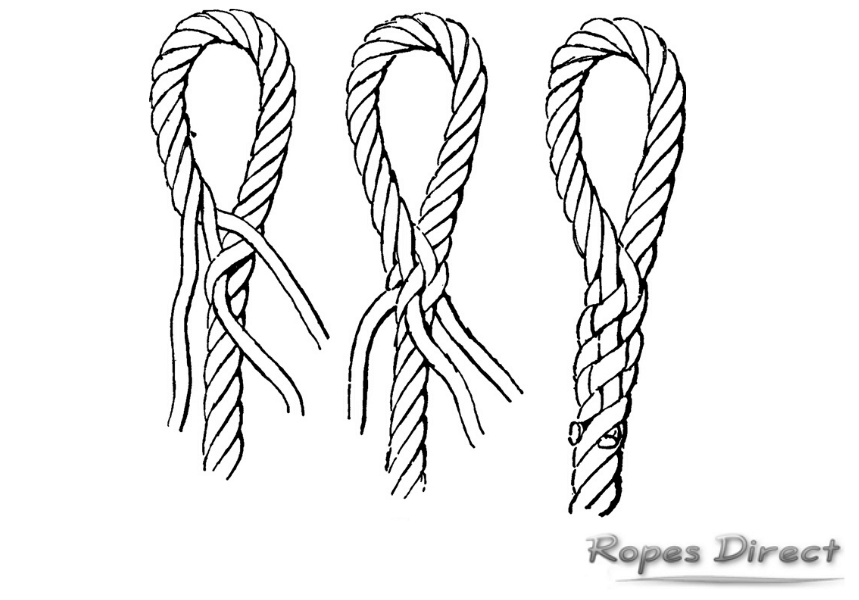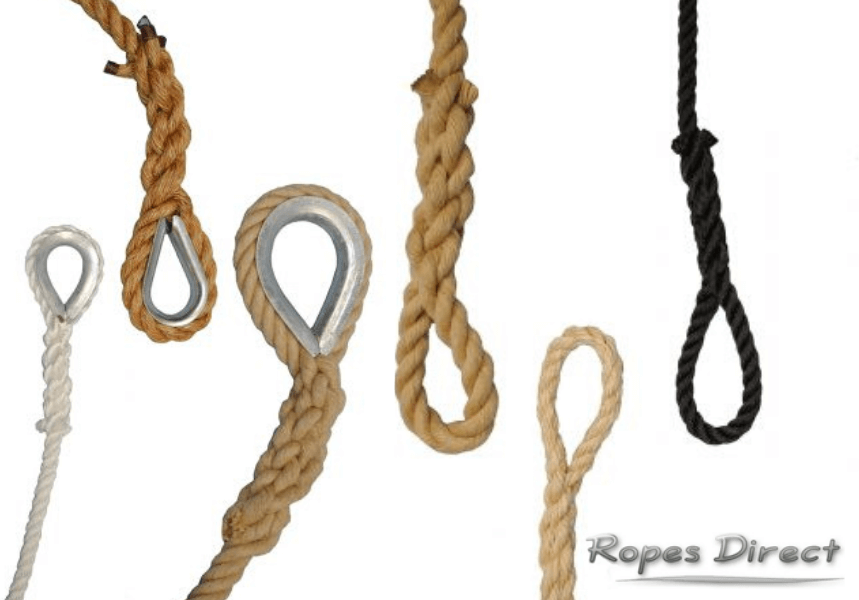Many of the ropes available at RopesDirect can be cut to length and supplied with a soft or hard splice. But what does that actually mean? It’s a question we get asked all the time by potential customers. So, we thought it was about time we shed a little light on this popular technique – and explain exactly what rope splicing is and when it should be added to your order.
What is splicing?
Essentially, splicing is a way of terminating a rope, without having to use a knot. We have a video on our YouTube channel showing you more.
Knots may be relatively easy to tie, but they often have a bulky and unsightly appearance. What’s more, because of their tight bends and compressions, they can significantly affect the performance of the rope – sometimes reducing its overall strength by up to 60% or more.
By contrast, a rope that has been spliced doesn’t have this problem. If it’s done correctly – using the recommended method – the splice will only reduce the overall strength by 10% or less. It makes a huge difference and is a great option if you wish to maintain the original properties of the rope.
Different types of rope splice
There are a wide range of rope splicing techniques to choose from (e.g. back splice, end-to-end splice, brummel splice etc.) – all of which are designed to create a neat rope end finish, without affecting the strength of the rope itself. However, the most common is the eye splice.
This is the splicing method offered here, at RopesDirect. It’s the strongest way to introduce a rope eyelet and, as a result, is typically used when a rope needs to be attached to a fixed point (such as a tree branch, garden post or anchor). To create the eyelet, the rope is simply looped back on itself and the loose ends are subsequently interweaved into the rope to make a secure join.

Two eye splice options are currently available, including:
This can be made using 3 or 4 strand ropes, in diameters ranging from 6-60mm. The final rope eyelet is very strong and durable, but it’s also flexible and soft to touch.
A hard eye splice is created in exactly the same way as a soft eye splice. However, before the loose ends are woven in, a galvanised metal thimble or stainless steel thimble is inserted into the eyelet. This thimble acts as a reinforcement. It significantly improves the stability and durability of the rope splice and helps to prevent wear and tear. As such, it’s often chosen for heavy-duty applications.
Invest in rope splicing today

Rope splicing can be very useful, especially if you want a rope to be as strong as possible and capable of bearing a heavy weight. It’s not a difficult technique to master – and, online, you’ll find hundreds of tutorial videos which explain step-by-step how to manipulate the rope and add a variety of different splices. But the easiest option is to order pre-spliced ropes direct from our website.
Soft and hard eye splices are available with a variety of our natural and synthetic ropes, including synthetic hemp, cotton rope, blue polypropylene rope and more. These come with heat sealed ends as standard. However, when you check out, simply add the desired rope end finish to the order – and we’ll ensure your new rope arrives with a perfectly crafted splice that is ready-to-use.
If you’d like to find out more about rope splicing, or have any questions about the splicing services we provide, please feel free to get in touch. We’re always happy to be of assistance.

